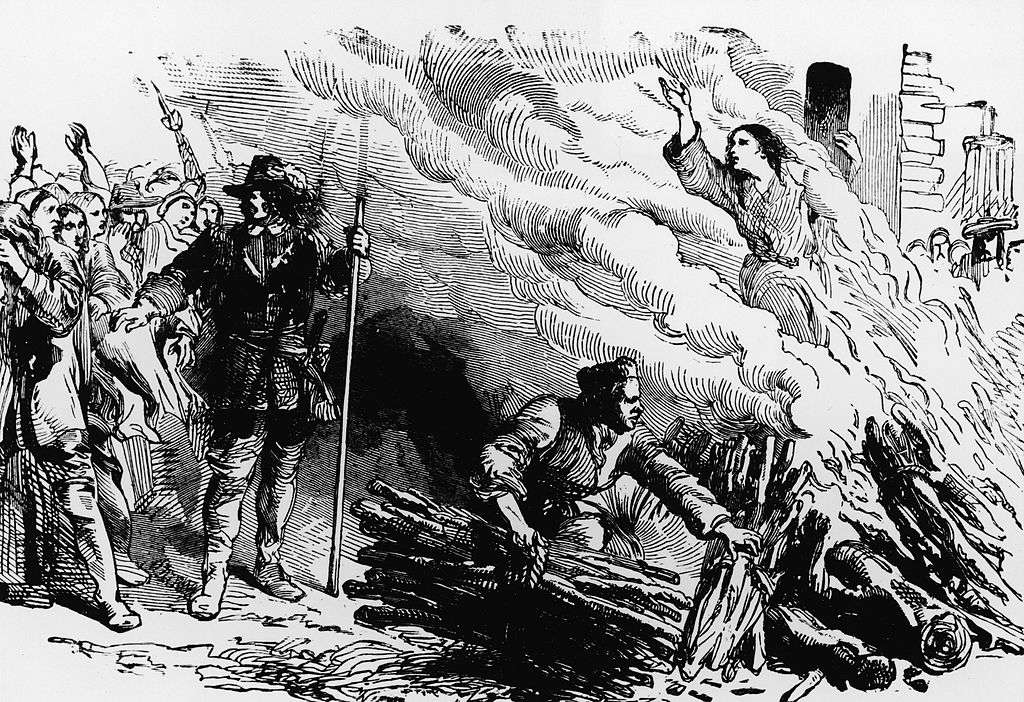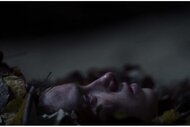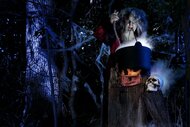Create a free profile to get unlimited access to exclusive videos, sweepstakes, and more!
Darkey Kelly: Witch, serial killer, or wronged woman?

For centuries, the name Darkey Kelly was the stuff of Irish legend. Accused of witchcraft and satanic rituals, the bleak tale of a brothel owning madam who became the country's first serial killer is embedded in the nation's lore. Kelly was one of many women in history who found themselves part of a scandalous mythos that spread like wildfire across the world. Yet another female killer, a witch, a vengeful force who sparked terror in the hearts of good people and had to be stamped out as violently as possible. The history of subversive, unruly, and dangerous women has inspired many fascinating stories, and they remain a key foundation of how we understand our past. Such is the case of Darkey Kelly, a real person whose shocking legend has long become separated from the truth of her life, death, and alleged crimes.
Very little is known about Dorcas Kelly's life before her arrest and execution. Contemporary reports of her supposed crimes don't help matters, either. We don't even have any paintings or images of her from her lifetime. In truth, Kelly is a woman whose legacy is exclusively defined by her death, a dishearteningly common occurrence throughout history. Most of the more tangible aspects of her story were written several years after she was executed, thus muddying the waters further. Here's what we know, or, at least, what we were led to believe as the truth for many years.
Dorcas "Darkey" Kelly was a madam who operated a brothel in the Southwest region of Dublin, near the city's fish-markets. In 1760, she was arrested and convicted of killing a shoemaker by the name of John Dowling. The following year, she was sentenced to death by partial hanging and burning at the stake. Curiously, men found guilty of murder were only hanged without the addition of burning. An account of an execution that took place several years later gives an idea of what Kelly may have suffered with:
"She was placed on a stool something more than two feet high, and, a chain being placed under her arms, the rope around her neck was made fast to two spikes, which, being driven through a post against which she stood, when her devotions were ended, the stool was taken from under her, and she was soon strangled. When she had hung about 15 minutes, the rope was burnt, and she sunk till the chain supported her, forcing her hands up to a level with her face, and the flame being furious, she was soon consumed."
After her death, Kelly was mourned by fellow sex workers. Thirteen of those women would end up in Newgate Prison on charges of public disorder. The story of Kelly remained dormant for a couple of decades before a 1788 report in the World newspaper reawakened the tale and added some colorful embellishments that stuck around to this day.
Now, the Kelly story included claims of mass murder. The World reported that her brothel on Copper Alley had been investigated by the local police and that they had uncovered the corpses of five men hidden in the vaults. None of these allegations appear in the contemporary accounts of her trial, but they proved too juicy for everyone to ignore or question. The lore only became more scandalous as the years passed.
The Kelly story became ever more lurid with the addition of an out-of-wedlock baby, a malicious nobleman, and some good old-fashioned witchcraft. Whispers spread that Kelly had become pregnant with the child of Simon Luttrell, the 1st Earl of Carhampton, and a man who had earned the dubious nickname of the "King of Hell" because of his shocking behavior. Luttrell, whose father had been a commander in the Jacobite Irish Army, was a known regular of Dublin's brothels and member of the aptly named Hellfire Club, one of many men-only establishments for the wealthy and troublesome gentleman. While such venues were most likely typical social clubs for drinking and casual rakery, rumors swirled that these were places of unfettered deviance for the noblemen who wished to indulge in their darkest desires. The name didn't help quash those claims, obviously.
Luttrell was said to be a regular visitor of Kelly's brothel, and that after she became pregnant with his child, she demanded financial support, which he denied. He then accused her of witchcraft, claiming that their baby was killed as part of her Satan-worshipping rituals. There's no proof of an affair, a love child, or an infanticide sacrifice to the devil, but it certainly added to the growing allure surrounding Kelly, many years after her death.
The origin of this myth may have its roots not in Simon Luttrell's misdeeds, but that of his eldest son Henry. Like his father, he was a regular visitor to brothels, and in 1788, he was publicly accused of raping a 12-year-old girl. The girl in question, Mary Neal, claimed that she had been enticed into delivering a letter to the house of brothel madam Maria Llewellyn, only to be bundled inside and attacked by Henry Luttrell. Llewellyn was described as a "sister" to Kelly, although it's not known if this was because they were biologically related or if it was simply a close friendship borne from a shared occupation. It was she who was accused of entrapping Mary Neal explicitly for Luttrell to rape her, a claim he denied. Eventually, Llewellyn was arrested and charged with witness tampering. The case became a major public drama, and Luttrell never faced any punishment for his alleged crimes. It is unknown what happened to Mary Neal.
Darkey Kelly had nothing to do with this case, what with having been dead for 27 years by that point in time, but the two stories seem to have melded together in the public consciousness. One "devious prostitute" is as good as another in history, so it seems. As has, unfortunately, always been the case, the history of women engaged in sex work is one that is either erased entirely from our memory or turned into endless cautionary tales of "fallen women" and the inevitably cruel fates they met. It seems that they have two options: be the corpse or the beyond-evil witch who slaughters men, eats babies, and deserves to be burned to death. Both options are unbearably cruel, but the latter has a bleak and admittedly questionably subversive edge that has drawn people to it for centuries. It's why we see women like Darkey Kelly celebrated as radical folk heroes, overlooked women of history with pubs named after them (yes, you can go to Darkey Kelly's pub in Dublin and order yourself a pint of Darkey Kelly's pale ale.) It's a fraud repackaged to tourists as fact, but it still seems like a preferable option to the actual truth.
History has yet to fully reclaim and pay its dues to the sex workers of the past. We still find it easier and more palatable to sell them to the world as witches rather than purveyors of the oldest profession. Darkey Kelly may not have been a witch, a serial killer, or a master criminal, but she is one of many women wronged by our shoddy reportage and understanding of the past.
























